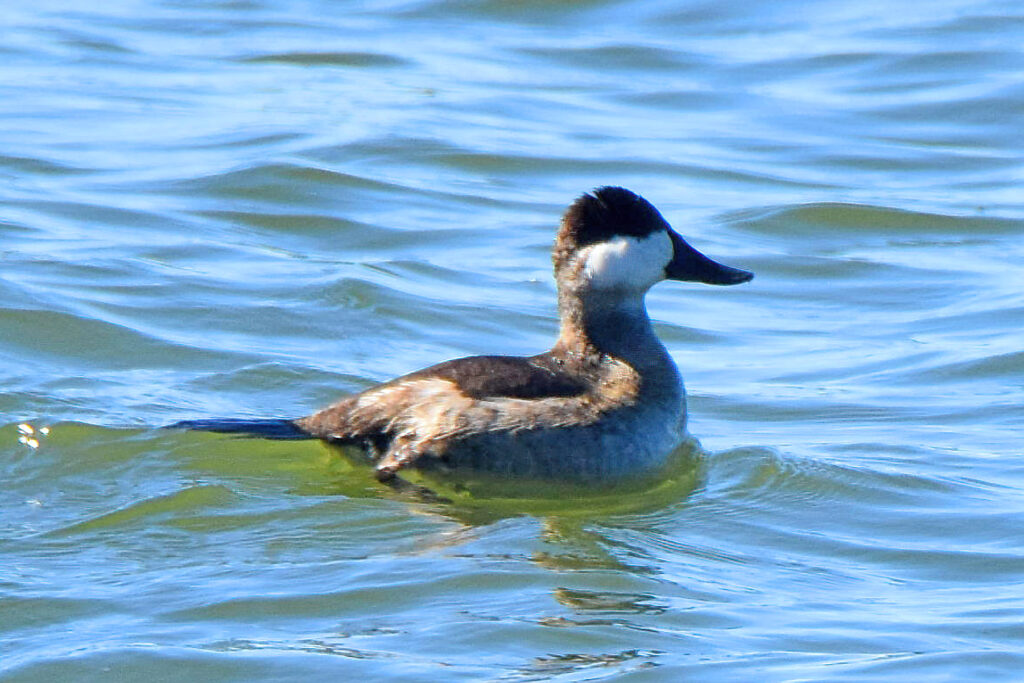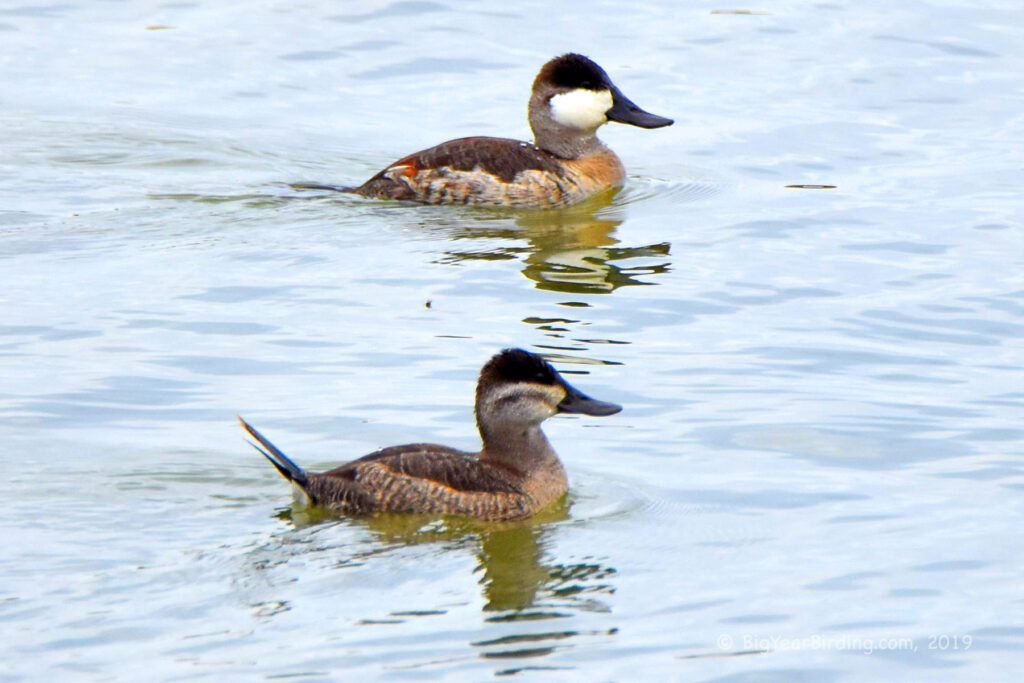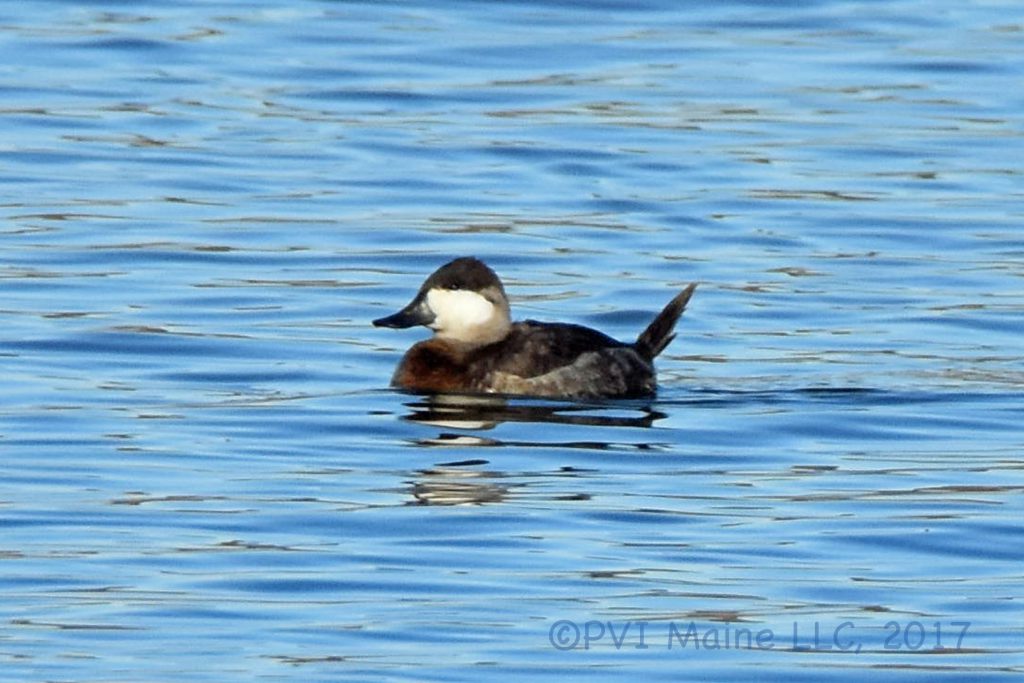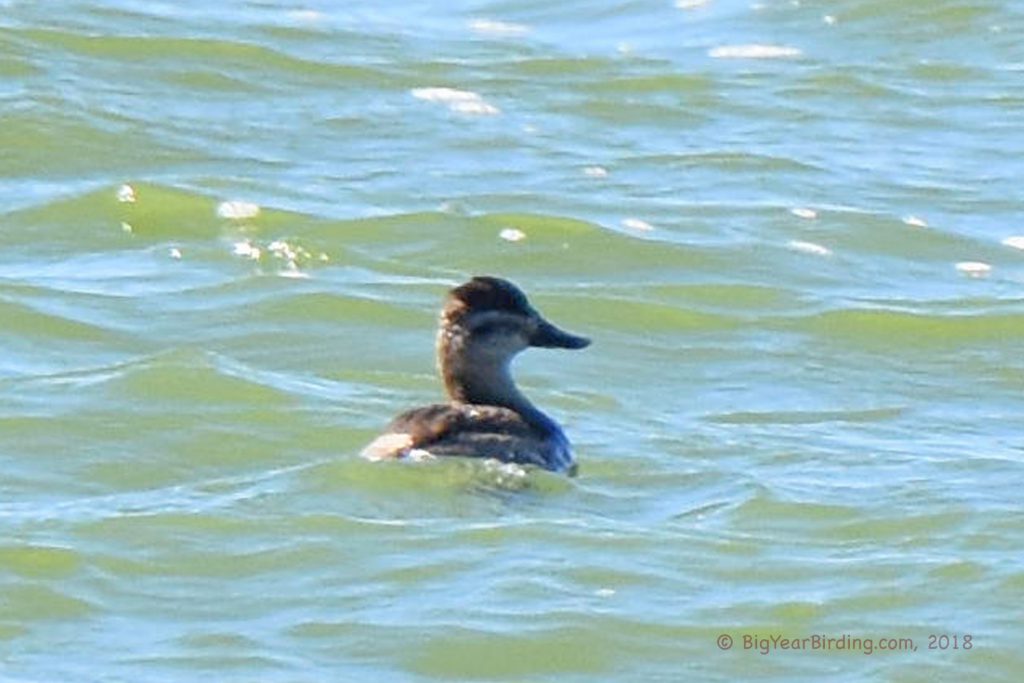
The Rudy Duck, also known as the Ruddy Duck, is a small diving duck that inhabits freshwater ponds, lakes, and marshes in North and South America. The male Rudy Duck measures about 14-17 inches in length and weighs between 1 and 1.5 pounds. The female is slightly smaller, measuring 13-15 inches in length and weighing between 14-27 ounces. The male has a distinctive blue bill and a reddish-brown body, while the female has a grayish-brown body with a darker crown and eye stripe.

One of the most distinguishing field marks of the male Rudy Duck is its unique breeding plumage. During the breeding season, the male has a bright blue bill, a black cap, and a white cheek patch. Its body is a rich chestnut color, with a black tail and white undertail coverts. The female, on the other hand, has a plain gray-brown body, with a light stripe above the eye.
The Rudy Duck is a migratory bird, and its breeding range extends from Alaska and Canada to the western United States and down to Mexico. During the non-breeding season, the Rudy Duck can be found as far south as Argentina. Rudy Ducks migrate in flocks, with some birds traveling as far as 1,500 miles to reach their wintering grounds. Their migration patterns vary depending on the population, but generally, they move southward during the fall and return to their breeding grounds during the spring.
The Rudy Duck is an expert diver, capable of staying underwater for up to 30 seconds while searching for food. Their diet consists primarily of aquatic insects, crustaceans, and small fish, which they catch by diving underwater. During the breeding season, males perform a distinctive courtship display, in which they inflate their neck feathers to create a large, balloon-like shape. The female then chooses a mate based on the size and shape of the male’s display.

While the Rudy Duck is not considered endangered, it faces several threats, including habitat loss, water pollution, and hunting. Efforts to conserve the Rudy Duck’s habitat and protect it from these threats are ongoing, and the species continues to be an important part of the ecosystem in the wetlands where it resides.

